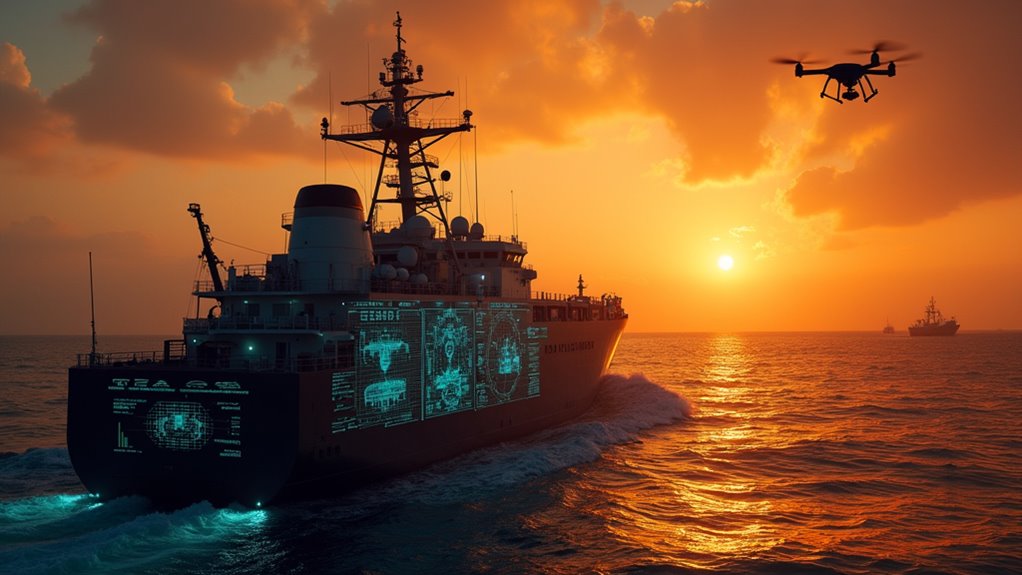AI is outsmarting modern ocean pirates through sophisticated tech solutions. Advanced algorithms analyze vessel data and satellite imagery to detect suspicious behavior that human analysts might miss. The digital dragnet—combining coastal radars, VIIRS, and SAR technology—has contributed to a whopping 92% decrease in illegal fishing seafood seizures since 2016. Even under cloudy skies, these systems can spot sketchy vessels. The battle for our oceans just got a whole lot smarter.
Lurking in the vast blue expanses of our oceans, pirates aren’t just the stuff of Hollywood movies with Johnny Depp and eye patches—they’re high-tech thieves plundering marine resources worth billions.
But these modern-day buccaneers are meeting their match in an unlikely hero: artificial intelligence.
Machine learning has revolutionized how we track these nautical ne’er-do-wells. AI systems now autonomously monitor millions of square kilometers of ocean 24/7, analyzing vessel location data from AIS and VMS sources to spot suspicious fishing activities. It’s like having thousands of digital sheriffs patrolling the high seas without needing a coffee break.
The real game-changer? These algorithms recognize patterns that human analysts might miss. When vessels suddenly switch off their transponders (the maritime equivalent of saying “nothing to see here, folks!”) or engage in erratic movement patterns, the AI raises red flags faster than you can say “Captain Hook.”
Satellite imagery processing has become particularly potent in this technological arsenal. Using VIIRS and SAR technology, authorities can spot illegal vessels even in the most remote locations. Cloud cover? No problem. These systems see through nature’s camouflage like Superman with X-ray vision.
What’s particularly impressive is how cost-effective these solutions have become. Traditional surveillance methods—think expensive aircraft patrols and sea-based boardings—are gradually being supplemented by more affordable technologies. The days of playing nautical hide-and-seek with limited resources are fading into the horizon.
The integration of multiple data sources has created a thorough detection network. Marine Monitor systems leverage everything from coastal radars to drone footage, creating a digital dragnet that’s increasingly difficult for illegal operators to evade. With the implementation of these systems, there has been a remarkable 92% decrease in seafood seizures from illegal fishing between 2016 and 2023.
Perhaps most importantly, AI is shifting enforcement from reactive to proactive strategies. Rather than chasing pirates after the fact, authorities can now predict where illegal fishing is likely to occur and position resources accordingly.
Researchers like those from the University of Virginia have developed sophisticated red flag counters that identify multiple illegal indicators from vessel behavior patterns, allowing for more targeted enforcement efforts.
It’s a sea change in how we protect our oceans—proving that sometimes the best weapon against pirates isn’t a cannon, but an algorithm.





